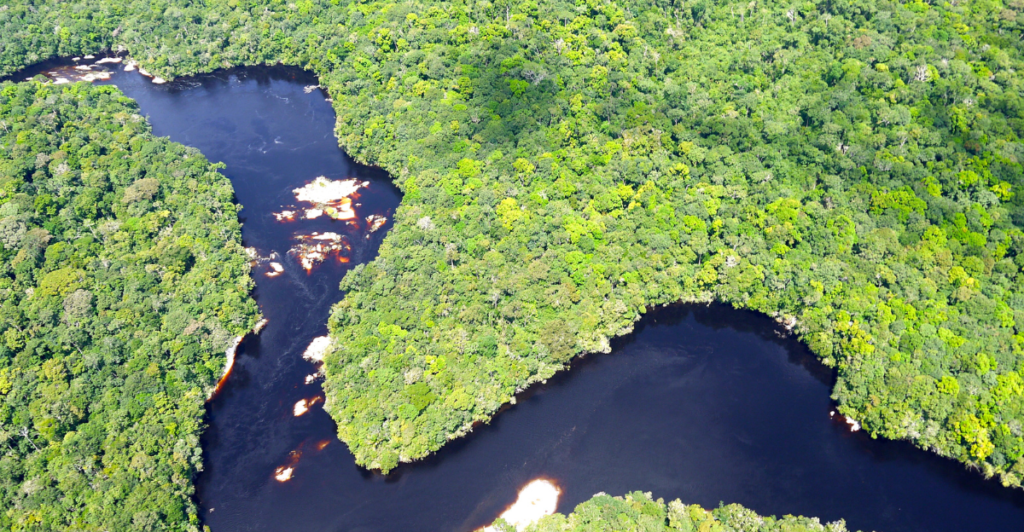
Chevron has been ordered to pay $744.6 million in damages following a civil jury verdict in Louisiana. The trial lasted over a decade and highlighted Chevron’s role in degrading southeast Louisiana’s coastal wetlands through its oil and gas operations.
This ruling marks the first of dozens of lawsuits to hold oil companies accountable for environmental destruction. Most people would say it’s about time, and there might still be some hope for the environment.
The Role of Louisiana’s Wetlands

These wetlands act as natural buffers against hurricanes and storm surges, reducing the devastating impacts of flooding and protecting communities and critical infrastructure, including oil and gas facilities.
They also support one of the most productive fisheries in the United States, providing nurseries for shrimp, oysters, and other marine species that sustain Louisiana’s $1 billion seafood industry. These wetlands also filter pollutants, maintain biodiversity, and offer recreational opportunities like fishing, hunting, and birdwatching.
However, Louisiana is losing its wetlands at an alarming rate, approximately a football field every 100 minutes, due to human intervention and climate change.
Texaco’s History of Environmental Damage

Texaco, acquired by Chevron in 2001, was found guilty of violating Louisiana’s coastal regulations for decades. This is the first of many uncovered sins, and they must pay for it.
From 1964 to 1992, Texaco dumped over 18.5 billion gallons of toxic waste into unlined pits and water systems, contaminating two million acres of rainforest and exposing indigenous communities to hazardous chemicals like benzene and polycyclic aromatic hydrocarbons.
There has also been a long history of destruction in the Ecuadorian Amazon. Despite legal battles that resulted in an Ecuadorian court’s $9.6 billion judgment in 2011, Chevron-Texaco has refused to pay or issue a formal apology for the destruction.
Breakdown of the $744 Million Verdict

The $744.6 million verdict against Chevron has three main components aimed at addressing decades of environmental damage to Louisiana’s wetlands caused by Texaco, which Chevron acquired in 2001. The jury awarded $575 million to compensate for land loss from canal dredging and drilling operations contributing to coastal erosion.
An additional $161 million was allocated to address contamination from billions of gallons of improperly disposed wastewater, which polluted the fragile marshlands. Lastly, $8.6 million was earmarked to remove abandoned equipment left behind in the wetlands. With interest accrued since the lawsuit’s filing in 2013, the total amount for restoration could exceed $1.1 billion.
Legal Precedent and Implications

As the first case among dozens of similar lawsuits in Louisiana to reach trial, it signals that energy companies may be held accountable for decades of environmental degradation caused by their operations. The jury’s decision, rooted in Louisiana’s 1978 coastal management law, underscores the enforceability of regulations requiring companies to restore damaged wetlands to their original condition.
This ruling could pave the way for additional lawsuits, potentially exposing other oil and gas firms to billions of dollars in liabilities for land loss and contamination across the Gulf Coast.
Chevron’s Defense and Planned Appeal

Chevron has mounted a vigorous defense, arguing that its operations complied with applicable laws and that Louisiana’s land loss stems primarily from man-made flood-control systems, particularly the levees restricting the Mississippi River’s natural sediment replenishment of coastal areas.
The company contends that resolving coastal erosion requires reconnecting the river to its delta rather than litigation while dismissing the parish’s $2.6 billion restoration plan as impractical and inflated. Chevron’s lead attorney, Mike Phillips, called the verdict “unfair,” citing alleged legal errors, including the retroactively applying Louisiana’s 1978 coastal law to activities predating its enactment.
The oil giant plans to appeal the $744.6 million judgment, setting the stage for prolonged legal battles that could influence the outcomes of similar lawsuits across the Gulf Coast.
Historical Context of Wetland Loss

The Mississippi River delta plain, formed over 10,000 years through sediment deposition, was once a dynamic system where wetlands naturally subsided and regenerated as the river shifted. However, human intervention in the 20th century disrupted this balance.
The construction of levees and dams along the Mississippi River cut off sediment flow, depriving wetlands of the material needed to counteract subsidence and sea-level rise. Extensive canal dredging by oil and gas companies accelerated erosion and saltwater intrusion, further degrading these ecosystems.
Between 1932 and 2000, Louisiana lost 1,900 square miles of land, an area larger than Rhode Island, due to these combined factors. This rapid loss has made Louisiana responsible for 80% of the nation’s coastal wetland decline.
1978 Coastal Zone Management Law

The 1978 Coastal Zone Management Law, officially known as the State and Local Coastal Resources Management Act, was a landmark piece of legislation that established Louisiana’s coastal management program under the guidelines of the federal Coastal Zone Management Act of 1972.
This law created a framework for balancing economic development with environmental protection in Louisiana’s unique and fragile coastal zone. It empowered state and local governments to regulate activities that could impact wetlands, requiring permits for specific land uses and mandating restoration efforts where damage occurred.
Over the years, this legislation has been a cornerstone in addressing Louisiana’s severe land loss crisis, enabling local parishes to hold industries accountable for their role in coastal erosion.
Environmental Restoration Challenges

Environmental restoration in Louisiana faces significant challenges stemming from the complexity of wetland ecosystems and the scale of damage caused by decades of human activity. One major obstacle is sediment starvation, as river channelization and dam construction have diverted essential sediments away from marshes, leaving them vulnerable to erosion.
Large-scale projects like the $50 billion Coastal Master Plan aim to address these issues through marsh creation, sediment diversions, and barrier island restoration. Still, these initiatives are costly, politically sensitive, and slow to produce results.
On the other hand, balancing restoration with ongoing industrial activities, like canal dredging and port expansion, further complicates efforts to reverse wetland loss.
A Turning Point for Environmental Accountability

Historically, oil and gas companies have operated with minimal oversight regarding their impact on fragile ecosystems like Louisiana’s wetlands. This decision demonstrates the growing power of local governments and communities to enforce environmental laws and demand restitution for decades of harm.
If upheld, this ruling could inspire similar lawsuits across the Gulf Coast and beyond, creating a legal framework prioritizing restoration and sustainability over unchecked industrial expansion.
Explore more of our trending stories and hit Follow to keep them coming to your feed!

Don’t miss out on more stories like this! Hit the Follow button at the top of this article to stay updated with the latest news. Share your thoughts in the comments—we’d love to hear from you!







